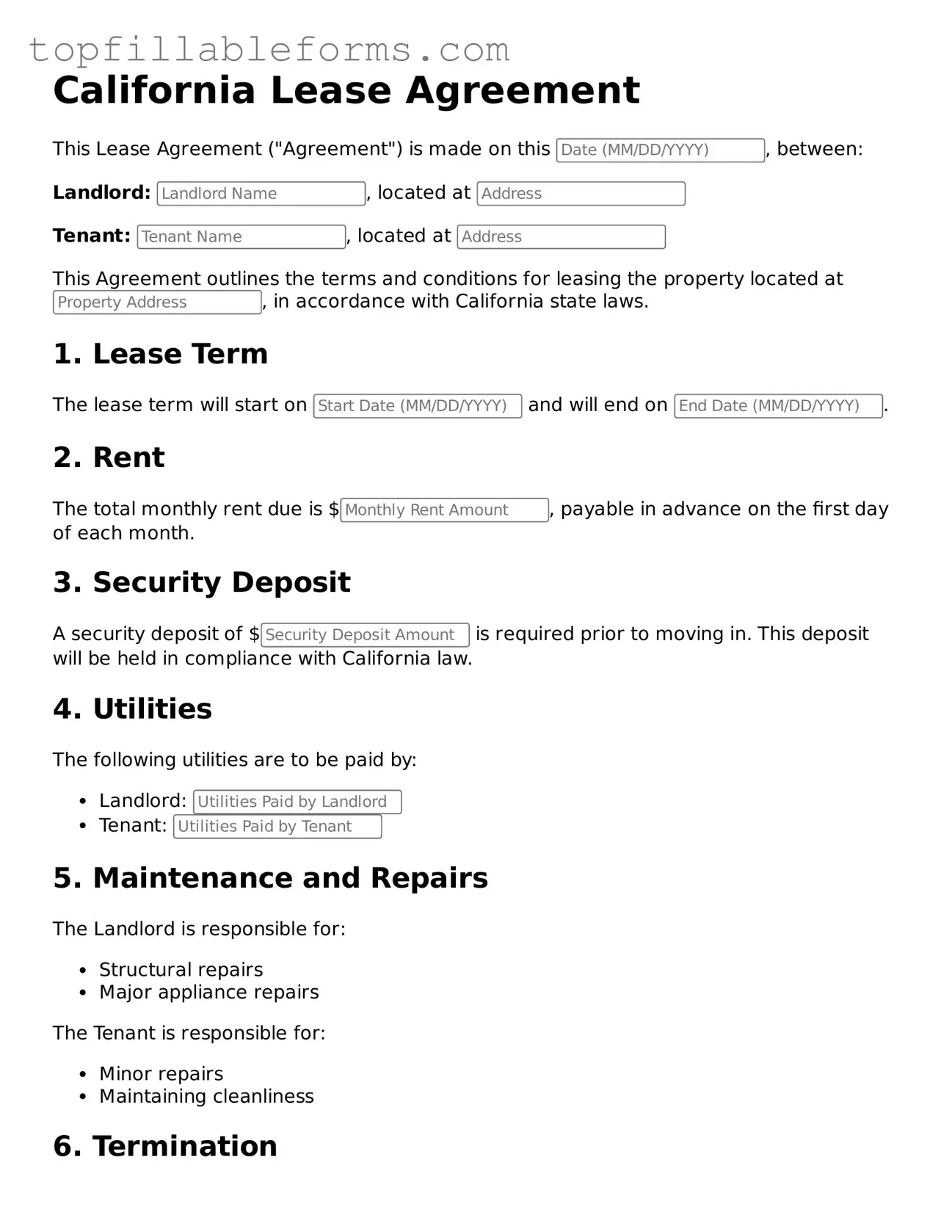Attorney-Verified Lease Agreement Template for California
A California Lease Agreement form is a legal document that outlines the terms and conditions between a landlord and a tenant for renting a residential property. This form ensures that both parties understand their rights and responsibilities, providing clarity and protection throughout the rental period. Understanding this agreement is essential for anyone entering into a rental arrangement in California.
Open Lease Agreement Editor Here
